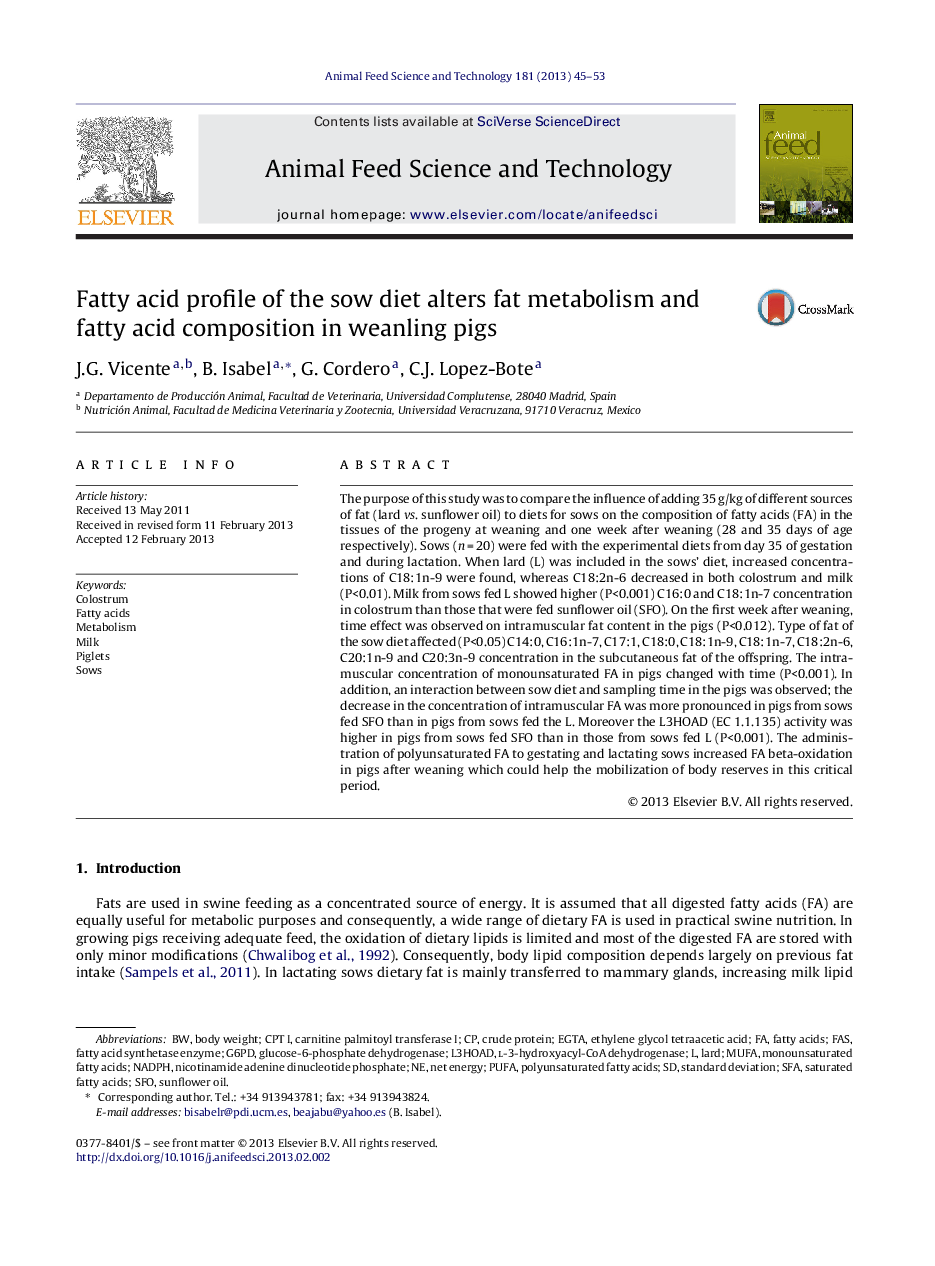| Article ID | Journal | Published Year | Pages | File Type |
|---|---|---|---|---|
| 8491938 | Animal Feed Science and Technology | 2013 | 9 Pages |
Abstract
The purpose of this study was to compare the influence of adding 35 g/kg of different sources of fat (lard vs. sunflower oil) to diets for sows on the composition of fatty acids (FA) in the tissues of the progeny at weaning and one week after weaning (28 and 35 days of age respectively). Sows (n = 20) were fed with the experimental diets from day 35 of gestation and during lactation. When lard (L) was included in the sows' diet, increased concentrations of C18:1n-9 were found, whereas C18:2n-6 decreased in both colostrum and milk (P<0.01). Milk from sows fed L showed higher (P<0.001) C16:0 and C18:1n-7 concentration in colostrum than those that were fed sunflower oil (SFO). On the first week after weaning, time effect was observed on intramuscular fat content in the pigs (P<0.012). Type of fat of the sow diet affected (P<0.05) C14:0, C16:1n-7, C17:1, C18:0, C18:1n-9, C18:1n-7, C18:2n-6, C20:1n-9 and C20:3n-9 concentration in the subcutaneous fat of the offspring. The intramuscular concentration of monounsaturated FA in pigs changed with time (P<0.001). In addition, an interaction between sow diet and sampling time in the pigs was observed; the decrease in the concentration of intramuscular FA was more pronounced in pigs from sows fed SFO than in pigs from sows fed the L. Moreover the L3HOAD (EC 1.1.135) activity was higher in pigs from sows fed SFO than in those from sows fed L (P<0.001). The administration of polyunsaturated FA to gestating and lactating sows increased FA beta-oxidation in pigs after weaning which could help the mobilization of body reserves in this critical period.
Keywords
L-3-hydroxyacyl-CoA dehydrogenasecarnitine palmitoyl transferase ICPT IG6PDNADPHEGTAFASSFOMUFASFAethylene glycol tetraacetic acidPolyunsaturated fatty acidsPUFAFatty acidssaturated fatty acidsmonounsaturated fatty acidsstandard deviationnet energyPigletsSunflower oilSowsMilkLardMetabolismnicotinamide adenine dinucleotide phosphatebody weightcrude proteinglucose-6-phosphate dehydrogenaseColostrum
Related Topics
Life Sciences
Agricultural and Biological Sciences
Animal Science and Zoology
Authors
J.G. Vicente, B. Isabel, G. Cordero, C.J. Lopez-Bote,
